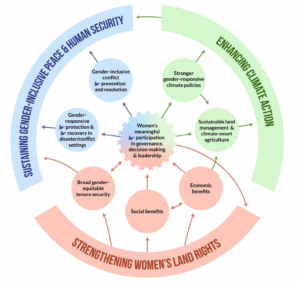The key findings of this study suggest a move toward greater alignment with international standards and Parties’ own commitments on gender equality, for example as reflected in the Paris Agreement, its Rulebook guidance and the Enhanced Lima Work Programme on Gender (LWPG) and its Gender Action Plan (GAP). This progression may further signal the importance that these Party-led commitments have had in further ensuring gender equality goals are integrated into climate actions, as seen in the varied examples of how gender equality can be mainstreamed in climate change policies and planning processes.
Noting that a quarter of submitted revised NDCs are gender-blind, and a significant number of countries have yet to submit updated plans, there is still ample opportunity for countries to identify and close gaps. Countries still in their revision processes in particular can review the guiding frameworks mentioned in the study, or draw inspiration from the country examples in this report, to ensure gender integration in their submissions, while all countries and supporting partners can devote attention to enabling conditions for driving gender-responsive implementation, impact reporting and learning.
Source: IUCN
Citation: IUCN (2021). Gender and national climate planning: gender integration in the revised Nationally Determined Contributions. Gland, Switzerland: IUCN.
Authors: Luna, M., Sabater, L., Owren, C., Rojas, A. Siles, J.




